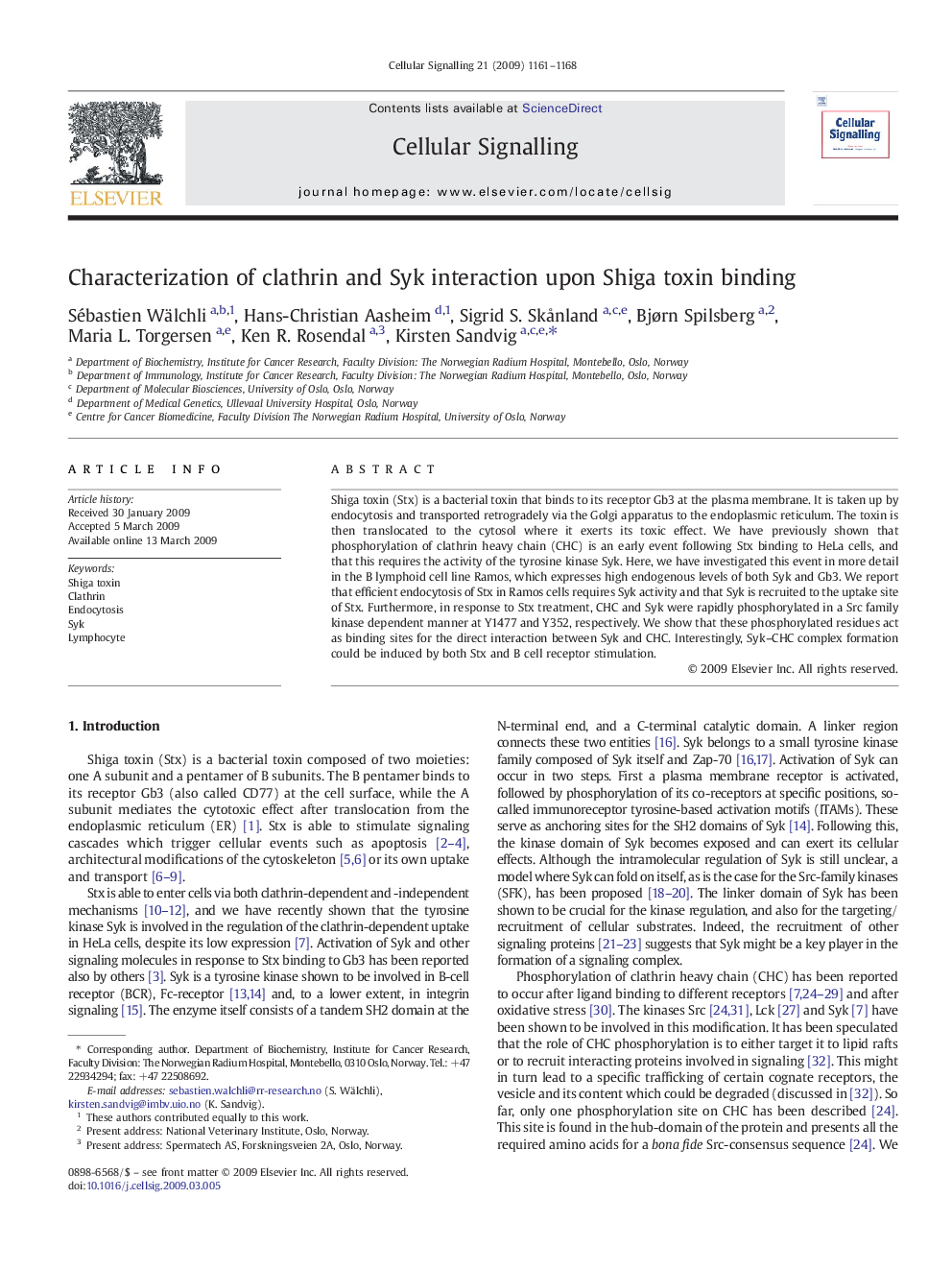| Article ID | Journal | Published Year | Pages | File Type |
|---|---|---|---|---|
| 1963928 | Cellular Signalling | 2009 | 8 Pages |
Shiga toxin (Stx) is a bacterial toxin that binds to its receptor Gb3 at the plasma membrane. It is taken up by endocytosis and transported retrogradely via the Golgi apparatus to the endoplasmic reticulum. The toxin is then translocated to the cytosol where it exerts its toxic effect. We have previously shown that phosphorylation of clathrin heavy chain (CHC) is an early event following Stx binding to HeLa cells, and that this requires the activity of the tyrosine kinase Syk. Here, we have investigated this event in more detail in the B lymphoid cell line Ramos, which expresses high endogenous levels of both Syk and Gb3. We report that efficient endocytosis of Stx in Ramos cells requires Syk activity and that Syk is recruited to the uptake site of Stx. Furthermore, in response to Stx treatment, CHC and Syk were rapidly phosphorylated in a Src family kinase dependent manner at Y1477 and Y352, respectively. We show that these phosphorylated residues act as binding sites for the direct interaction between Syk and CHC. Interestingly, Syk–CHC complex formation could be induced by both Stx and B cell receptor stimulation.
